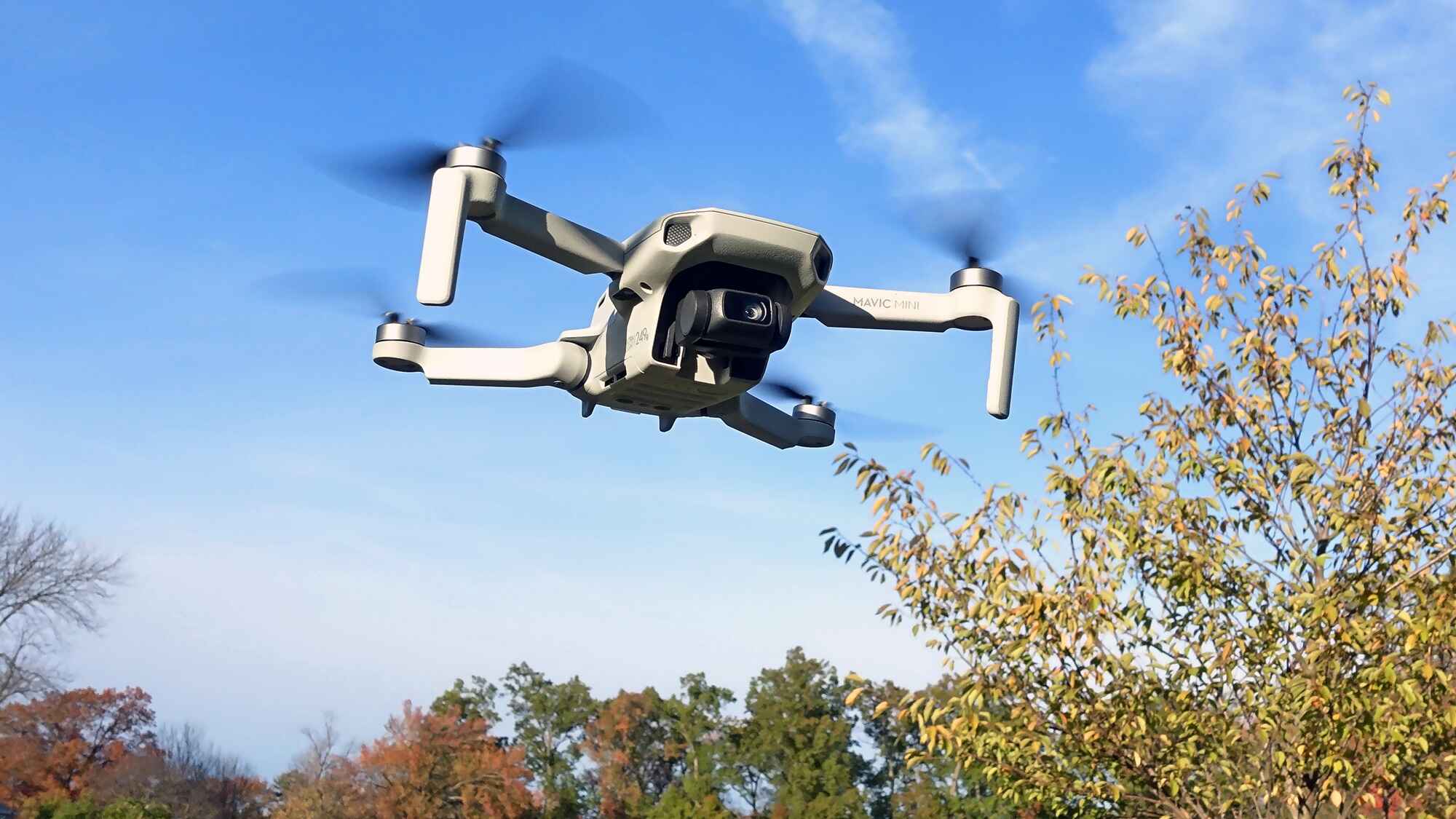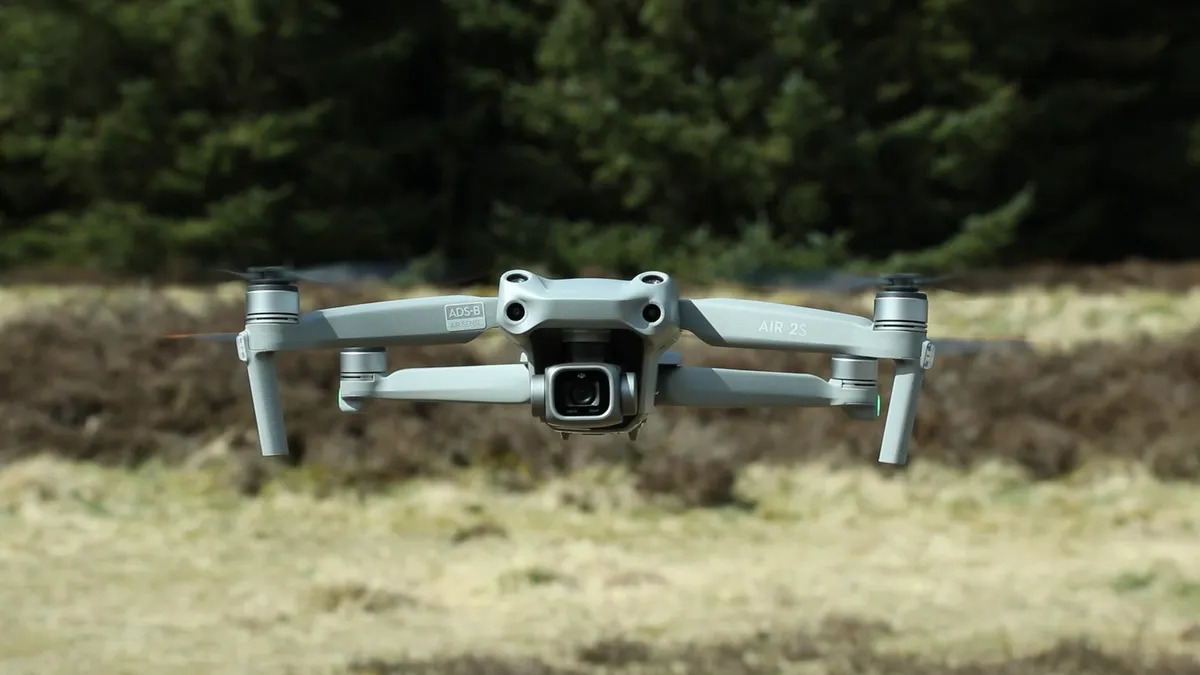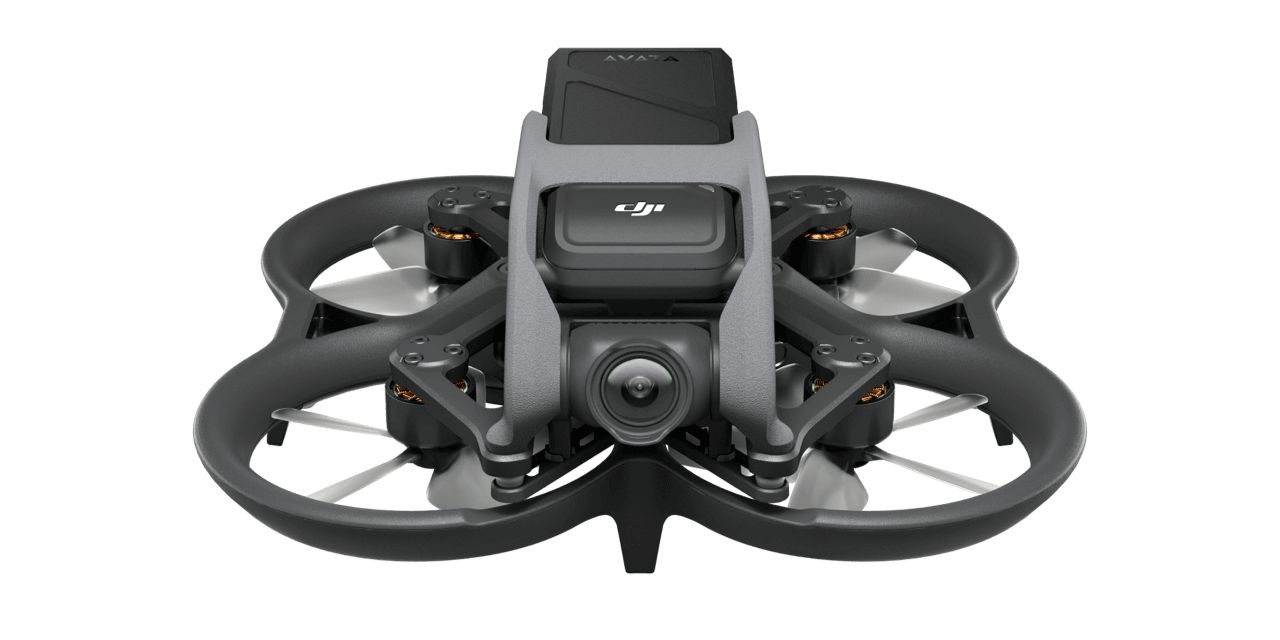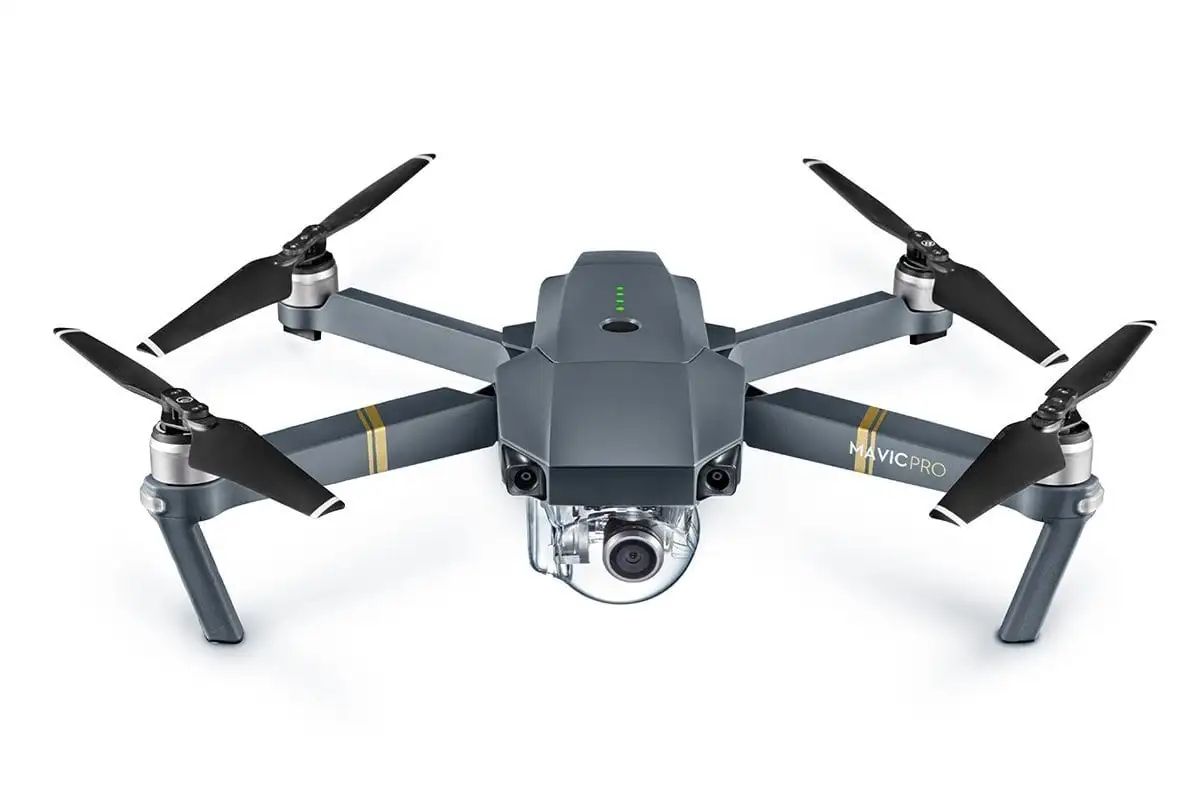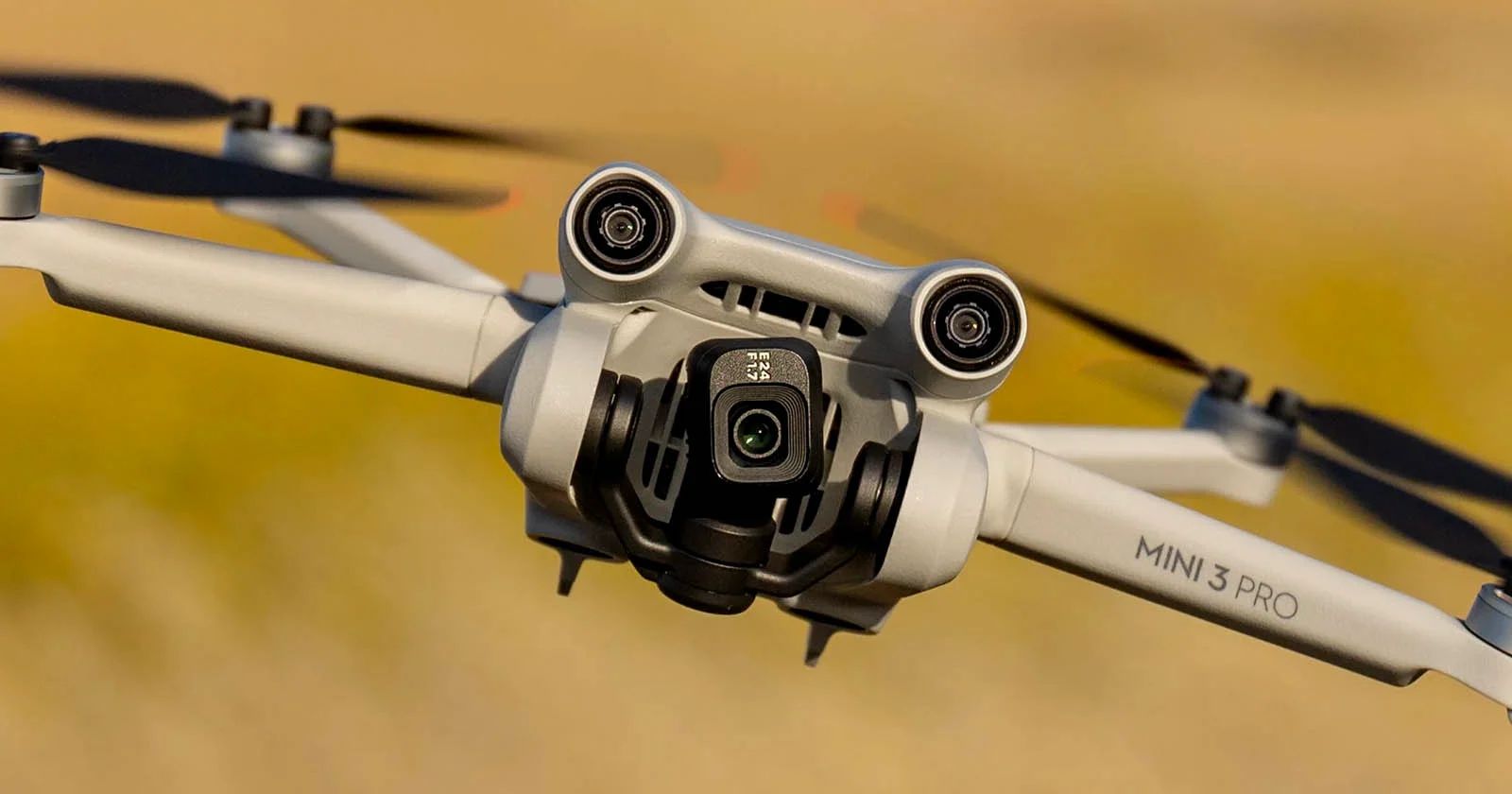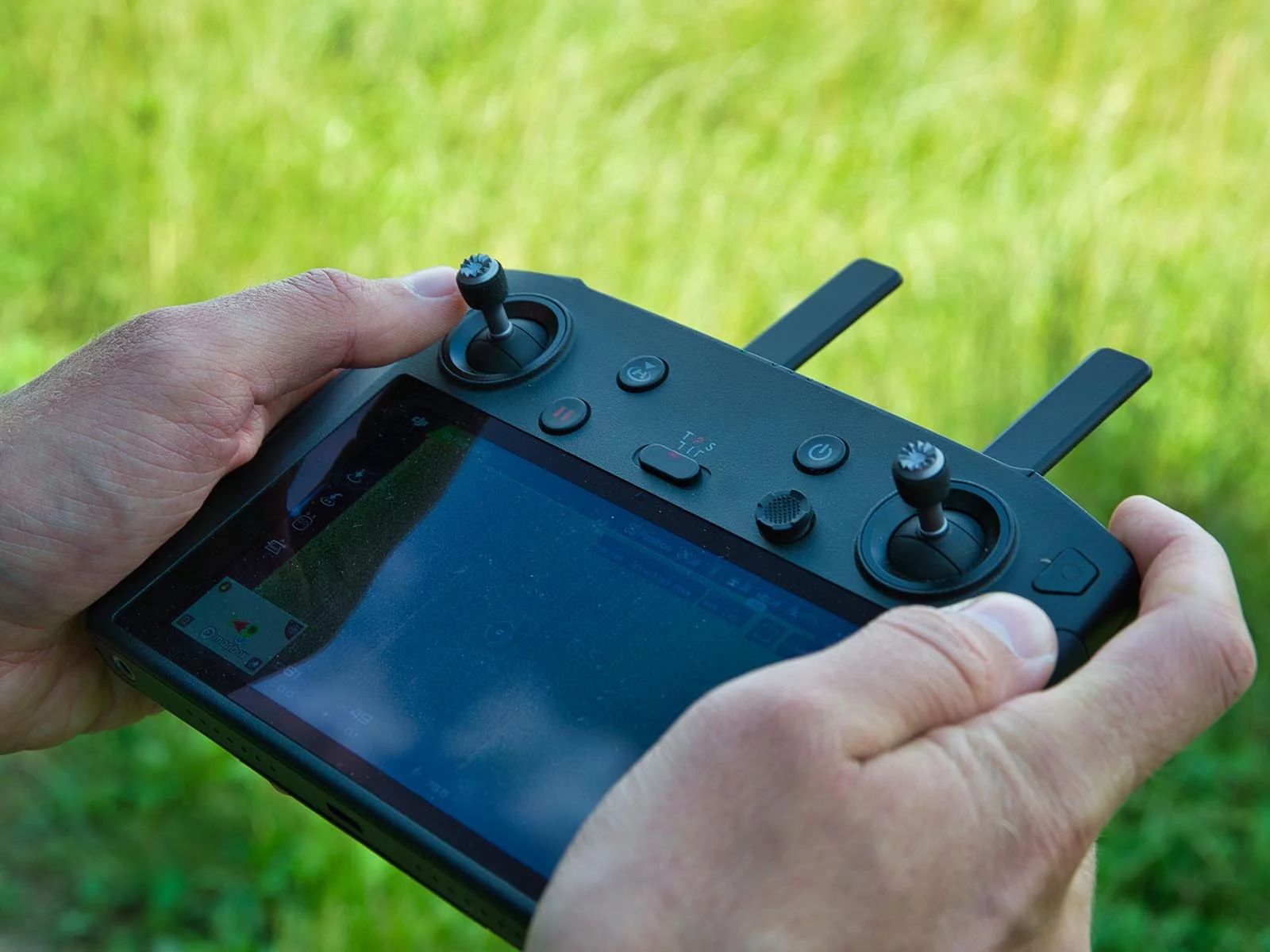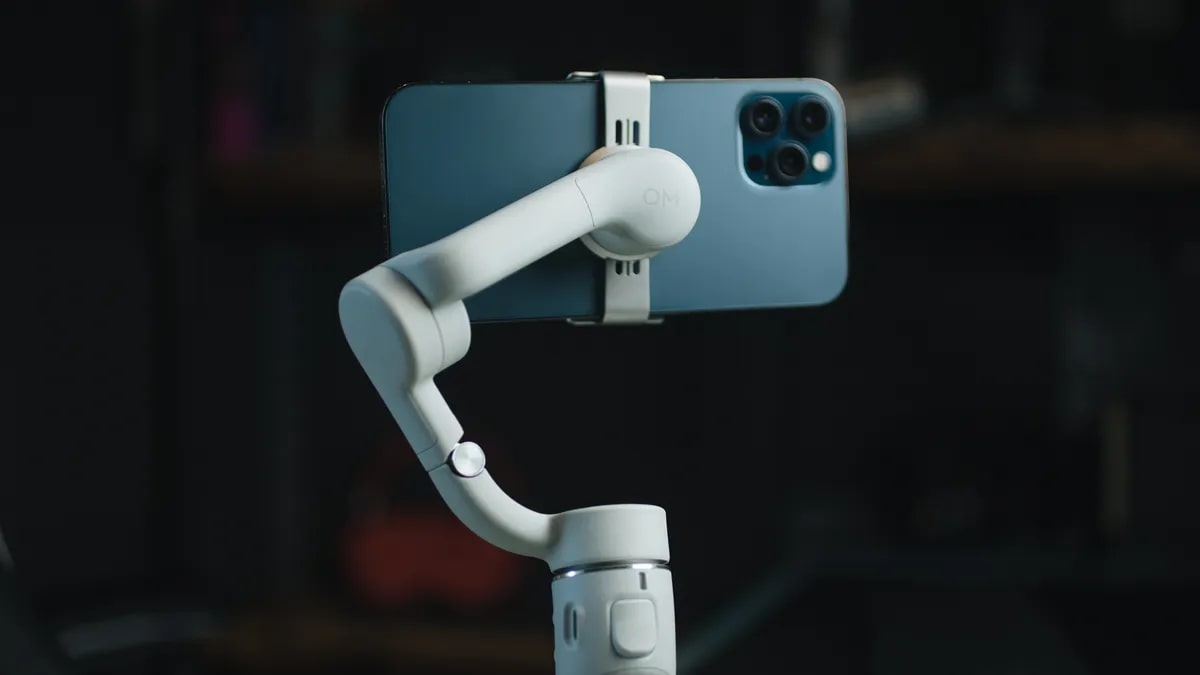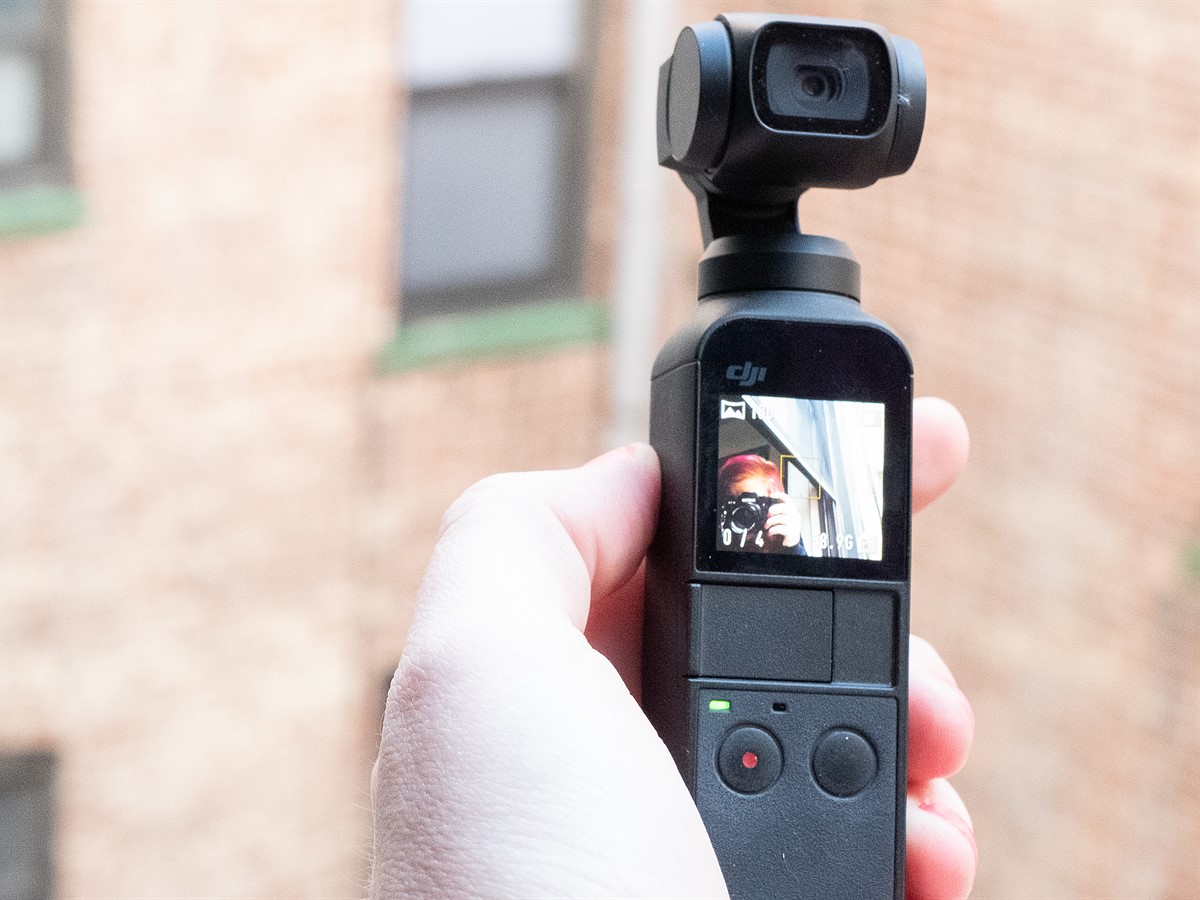Introduction
Welcome to the world of drones and aerial photography, where DJI reigns supreme. Whether you’re an aerial enthusiast, a professional cinematographer, or simply curious about the technology behind these flying machines, you’ve likely come across the name DJI. But what exactly does DJI stand for? In this article, we will delve into the origins of DJI, decipher its acronym, explore its products and innovations, and examine the impact that DJI has had on various industries. So, fasten your seatbelts and prepare for a journey into the fascinating world of DJI.
DJI, which stands for Da-Jiang Innovations, is a Chinese technology company that has established itself as the global leader in the drone industry. With its cutting-edge products and advanced drone technologies, DJI has revolutionized the way we capture images and videos from above. From consumer drones to professional-grade aerial cinematography tools, DJI offers a wide range of products that cater to the needs of different users.
Since its inception in 2006, DJI has grown exponentially in both size and influence. It has become synonymous with innovation, quality, and reliability in the drone market. With its headquarters in Shenzhen, China, DJI has expanded its operations to have a strong global presence, with offices and authorized dealers in countries around the world.
But DJI’s success story is not just about drones. The company’s commitment to research and development has led to the creation of groundbreaking technologies that go beyond aerial imaging. DJI’s expertise in areas such as flight control systems, camera stabilization, and artificial intelligence has enabled it to venture into other industries, ranging from agriculture and construction to public safety and filmmaking.
In the following sections, we will explore the origins of DJI, discover the meaning behind its acronym, discuss its flagship products, and understand the impact it has had on various industries. So, without further ado, let’s dive into the captivating world of DJI.
DJI: The World Leader in Drones and Aerial Photography
When it comes to drones and aerial photography, DJI stands head and shoulders above the competition. With its unrivaled technology, exceptional product quality, and extensive range of offerings, DJI has firmly cemented its position as the global leader in this industry.
DJI’s success can largely be attributed to its relentless pursuit of innovation, pushing the boundaries of what is possible in the field of unmanned aerial vehicles. By combining cutting-edge hardware with powerful software solutions, DJI has significantly simplified the process of capturing stunning aerial imagery.
One of the key factors that sets DJI apart is its unwavering commitment to meeting the diverse needs of its customers. From entry-level drones suited for beginners to professional-grade equipment used by aerial photographers and cinematographers, DJI offers a comprehensive range of products that cater to all skill levels and use cases. Whether you’re a recreational enthusiast looking to capture breathtaking landscapes or a professional filmmaker aiming to capture cinematic shots, DJI has a drone specifically designed to meet your requirements.
With advanced features like autonomous flight modes, obstacle avoidance, and high-resolution cameras, DJI drones provide users with an unparalleled level of control and creativity. The integration of innovative technologies, such as GPS positioning, gyro stabilization, and intelligent flight control systems, ensures smooth and stable flights even in challenging conditions.
Beyond just the hardware, DJI has developed a robust ecosystem that supports the entire aerial imaging workflow. From aerial mapping and surveying to professional post-processing software, DJI offers a range of applications and tools that enhance the capabilities and productivity of its drones.
Another essential aspect of DJI’s success is its dedication to safety. The company has implemented numerous safety features, such as geofencing, flight altitude restrictions, and no-fly zone databases, to ensure responsible and secure drone operations. Additionally, DJI provides comprehensive educational resources, including online tutorials and certification programs, to promote safe and responsible drone flying practices.
With its dominant market share and continuous innovation, DJI has not only reshaped the consumer drone industry but has also made a significant impact on various professional sectors. Its drones have become invaluable tools in industries such as aerial surveying, infrastructure inspection, agriculture, search and rescue operations, and filmmaking. The precision, speed, and efficiency offered by DJI’s drones have not only transformed workflows but have also opened up new possibilities for businesses and industries across the globe.
In the next section, we will delve into the fascinating history of DJI, tracing its roots and pivotal moments that have shaped the company into what it is today.
The Origin of DJI: A Brief History
Every successful company has its humble beginnings, and DJI is no exception. The story of DJI started in 2006 in Shenzhen, China when its founder, Frank Wang, recognized the untapped potential of unmanned aerial vehicles (UAVs) at a time when drones were still in their infancy.
Wang, a passionate enthusiast for remote-controlled aircraft, saw an opportunity to revolutionize the drone industry by developing advanced technology that would make drones more accessible and user-friendly. With a small team of engineers, he founded DJI, originally named Da-Jiang Innovations Science and Technology Co., Ltd.
One of DJI’s first breakthroughs was the launch of the Phantom series in 2013, which introduced a highly capable and affordable consumer drone to the market. The Phantom drones quickly gained popularity, setting a new standard for ease of use and camera quality. This success propelled DJI into the spotlight, attracting attention from both recreational users and professionals.
Building on this momentum, DJI continued to innovate and expand its product lineup. In 2014, DJI introduced the Inspire 1, a professional-grade drone featuring a built-in 4K camera and a transforming design, allowing for unobstructed 360-degree aerial shots. The Inspire 1 marked a significant milestone for DJI, solidifying its position as a leader in the professional drone market.
As the demand for drones grew, so did DJI’s ambition. The company recognized the immense potential of aerial photography and cinematography and began developing specialized camera stabilization systems. In 2016, DJI launched the Osmo, a handheld gimbal with an integrated camera, enabling users to capture smooth and cinematic footage on the ground. This marked DJI’s expansion into the realm of ground-based imaging solutions.
Expanding its horizons further, DJI ventured into the industrial sector with the release of the Matrice series, designed for aerial inspection, mapping, and surveying applications. These drones offered unparalleled stability, precision, and advanced flight control capabilities, empowering industries such as construction, agriculture, and infrastructure inspection.
Today, DJI continues to lead the drone industry with its groundbreaking innovations, dominating both the consumer and professional markets. Its product lineup includes a wide range of drones, namely the Mavic series, Phantom series, and Inspire series, each catering to different levels of expertise and user requirements.
Through strategic acquisitions and partnerships, DJI has also expanded its technological expertise and capabilities. This includes the acquisition of Hasselblad, a renowned camera manufacturer, to enhance the imaging capabilities of its drones. Additionally, DJI collaborates with various industry leaders to develop specialized solutions for specific professional applications.
In the following sections, we will decipher the DJI acronym and explore the remarkable products and innovations that have propelled DJI to the forefront of the drone industry.
Deciphering the DJI Acronym
Have you ever wondered what DJI stands for? The acronym DJI is an abbreviation for Da-Jiang Innovations, reflecting the company’s commitment to technological advancement and innovation in the field of unmanned aerial vehicles (UAVs).
The name “Da-Jiang” holds cultural significance as it represents a historical term from the Chinese classic book “The Art of War,” written by military strategist Sun Tzu. Da-Jiang can be translated to mean “Great River,” symbolizing the company’s ambition to conquer new territories and make a significant impact in the drone industry.
With “Innovations” as the second part of the acronym, DJI highlights its dedication to pushing the boundaries of what is possible in drone technology. DJI continuously strives to stay at the forefront of the industry by introducing new features, advanced flight control systems, and cutting-edge camera stabilization solutions.
The DJI acronym embodies the company’s core values, which are centered around innovation, quality, and reliability. DJI’s goal is not only to provide users with high-performance drones but also to redefine and revolutionize the way aerial imaging is done.
While DJI started its journey as a consumer drone company, it has expanded into various professional sectors, including filmmaking, aerial surveying, inspection services, and more. The DJI acronym continues to represent the company’s commitment to innovation across these diverse industries.
Moreover, DJI’s focus on innovation is not limited to hardware alone. The company has also developed proprietary software solutions that enhance the capabilities of its drones. This includes flight planning tools, intelligent flight modes, and post-processing software, providing users with a seamless and comprehensive aerial imaging workflow.
In addition to its technological innovations, DJI places a strong emphasis on user experience. The company strives to make its drones accessible to users of all skill levels, ensuring that even beginners can unleash their creativity and capture stunning aerial imagery.
By deciphering the DJI acronym, we gain a deeper understanding of the company’s core values, mission, and vision. It represents a commitment to technological advancement and innovation, as well as a dedication to providing users with the tools they need to explore and capture the world from new heights.
In the following sections, we will explore the remarkable products and innovations that have made DJI a household name in the drone industry and examine the impact that DJI has had on various sectors.
DJI’s Products and Innovations
DJI’s success in the drone industry can be attributed to its impressive range of products and constant commitment to innovation. The company offers a diverse lineup of drones and accessories that cater to the needs of both recreational enthusiasts and professional users.
One of DJI’s most popular product lines is the Mavic series, which includes the compact and portable Mavic Mini, the versatile Mavic Air 2, and the high-performance Mavic 2 Pro. The Mavic drones are known for their advanced flight features, excellent image quality, and intuitive controls, making them ideal for capturing stunning aerial shots with ease.
The Phantom series, another flagship line from DJI, has set the industry standard for consumer and professional drones. With powerful cameras, long flight times, and advanced flight modes, the Phantom drones provide incredible aerial imaging capabilities.
DJI’s Inspire series is specifically designed for professional cinematographers and content creators. With a modular design and a range of interchangeable cameras, the Inspire drones offer unparalleled image quality and cinematic capabilities.
In addition to their drones, DJI has also developed a range of specialized accessories and camera stabilization systems. The Ronin series of gimbals provides professional filmmakers with the tools they need to capture smooth and stable shots, whether on the ground or in the air.
DJI has not only focused on consumer and professional drones but has also ventured into industrial applications. The Matrice series is designed for commercial applications such as aerial inspection, mapping, and search and rescue operations. These drones offer advanced flight control systems, high payload capacities, and specialized cameras to meet the specific needs of industries.
One of DJI’s notable innovations is the development of intelligent flight control systems. These systems incorporate GPS, obstacle avoidance, and artificial intelligence technologies to enhance flight safety and precision. DJI’s drones can autonomously navigate complex environments and avoid obstacles, allowing users to focus on capturing the perfect shot.
Furthermore, DJI has made significant strides in image stabilization technology, enabling users to capture smooth and cinematic footage. Their proprietary camera stabilization systems, such as the Zenmuse series and the Osmo Pocket, provide users with professional-grade image stabilization even in challenging conditions.
DJI’s commitment to innovation extends beyond hardware. The company has developed a range of software solutions to enhance the capabilities of its drones. This includes the DJI Fly app, which offers intuitive flight control, automatic editing features, and access to a wide range of creative tools. Additionally, DJI provides a software development kit (SDK) that allows third-party developers to create custom applications and integrations.
Overall, DJI’s diverse range of products and constant pursuit of innovation have solidified its position as the industry leader. By understanding the needs of different users and delivering high-quality, innovative solutions, DJI has reshaped the drone industry and empowered users to capture breathtaking aerial imagery.
In the next section, we will explore the significant impact that DJI has had on various industries, revolutionizing workflows and unlocking new possibilities.
DJI’s Impact on Various Industries
DJI’s technological advancements and innovative drone solutions have had a profound impact on a wide range of industries, revolutionizing workflows and unlocking new possibilities in sectors previously unimaginable. Let’s explore some of the sectors where DJI has made a significant impact.
1. Aerial Photography and Cinematography: DJI’s high-quality cameras and advanced stabilization systems have transformed the way photographers and filmmakers capture aerial imagery. Drones like the Inspire series and the Phantom series enable professionals to capture cinematic shots and breathtaking landscapes from unique perspectives.
2. Agriculture: DJI’s drones have revolutionized the agriculture industry by providing farmers with valuable insights into crop health, irrigation management, and pesticide application. With specialized cameras and software, DJI drones enable efficient monitoring of crops, leading to improved yields and reduced resource waste.
3. Infrastructure Inspection: DJI drones have significantly improved the process of inspecting infrastructure such as bridges, power lines, and buildings. The ability to capture high-resolution imagery and videos from difficult-to-reach locations allows for faster and more accurate inspections, minimizing risks and reducing costs.
4. Search and Rescue: In emergency situations, DJI’s drones equipped with thermal imaging cameras and high-resolution cameras offer a vital tool for search and rescue teams. Drones can quickly cover large areas, locate missing persons, and provide real-time situational awareness, aiding in swift and effective rescue operations.
5. Construction and Surveying: DJI drones with their precise flight control systems and advanced scanning capabilities have revolutionized construction site monitoring, mapping, and surveying. Aerial data collected by DJI drones aids in accurate site modeling, progress tracking, and volume calculations, enhancing efficiency, and reducing costs.
6. Environmental Conservation: DJI drones have become invaluable tools for environmental research and conservation efforts. From monitoring wildlife populations to mapping sensitive ecosystems, drones facilitate non-invasive data collection, enabling researchers and conservationists to better understand and protect our natural world.
7. Public Safety and Law Enforcement: DJI’s drones have been adopted by law enforcement agencies for various purposes, including search and rescue operations, crime scene investigation, and crowd monitoring. Drones equipped with thermal cameras and live video streaming capabilities aid in enhancing public safety and improving response times.
8. Filmmaking and Entertainment: DJI’s drones have opened up new possibilities in the world of filmmaking and entertainment, allowing filmmakers to capture breathtaking aerial shots without the need for expensive helicopter rentals or large-scale production teams. The versatility and image quality of DJI drones have made them indispensable tools for filmmakers worldwide.
These are just a few examples of the industries where DJI has made a significant impact. By providing accessible and reliable drone solutions, DJI has transformed how businesses operate, offering new perspectives, increased efficiency, and improved safety measures. As technology continues to evolve, DJI’s influence is expected to grow, driving further innovation and pushing the boundaries of what drones can achieve.
In the next section, we will examine the future of DJI and speculate on where the company is headed in the ever-evolving world of drone technology.
The Future of DJI: Where is the Company Headed?
As the global leader in the drone industry, DJI continues to push the boundaries of innovation and redefine what is possible with unmanned aerial vehicles. The future of DJI holds immense potential as the company expands its offerings, explores new technologies, and solidifies its position in the market.
One area where DJI is expected to make significant advancements is in the realm of artificial intelligence (AI) and autonomous flight. DJI has already begun incorporating intelligent flight modes and obstacle avoidance into its drones, but the company aims to further enhance these capabilities. We can expect to see more advanced AI systems that enable drones to navigate complex environments, avoid obstacles with greater precision, and even perform tasks autonomously.
DJI is also likely to deepen its integration of augmented reality (AR) and virtual reality (VR) technologies. These immersive technologies can enhance the user experience by providing more intuitive controls, immersive flight simulations, and interactive visualization of aerial data. By leveraging AR and VR, DJI can offer new and enhanced features that cater to both recreational and professional users.
In terms of hardware, DJI will continue to innovate and refine its drone designs. We can anticipate advancements in areas like battery life, flight range, and camera technology. DJI’s commitment to lightweight and portable designs will likely continue, enabling users to easily transport and deploy their drones in various environments.
Furthermore, DJI is likely to expand its ecosystem of software and services. Currently, DJI offers a range of applications that enhance the capabilities of its drones, such as flight planning, editing, and data analysis tools. Going forward, we can anticipate DJI further developing its software offerings, with a focus on seamless integration, improved data management, and enhanced post-processing capabilities.
As the demand for drones continues to grow, DJI will also explore new markets and industries. This includes sectors such as delivery services, urban transportation, and surveillance. DJI’s expertise in drone technology, combined with its commitment to safety and innovation, positions the company to capitalize on emerging opportunities and shape the future of aerial transportation and logistics.
Additionally, DJI is likely to strengthen its collaborations and partnerships with other technology leaders. This includes working with companies in the fields of artificial intelligence, imaging, and sensor technologies. By combining their expertise, DJI can leverage these collaborations to develop groundbreaking solutions and drive the industry forward.
Overall, the future of DJI looks incredibly promising. The company’s dedication to innovation, its strong market position, and its ability to deliver high-quality products have firmly established DJI as a leader in the drone industry. With the continuous advancements in technology and the ever-expanding applications of drones, DJI is poised to continue shaping the industry and unlocking new possibilities in the years to come.
While we cannot predict the exact future of DJI, it is certain that the company will remain at the forefront of the drone industry, setting new standards and pushing the boundaries of what is possible with unmanned aerial vehicles.
Conclusion
DJI, with its rich history, commitment to innovation, and a wide range of high-quality products, has established itself as the world leader in drones and aerial photography. From its humble beginnings in 2006, DJI has transformed the way we capture images and videos from above, revolutionizing industries across the globe.
The DJI acronym, standing for Da-Jiang Innovations, reflects the company’s ambition to conquer new territories and push the boundaries of drone technology. DJI’s relentless pursuit of innovation has resulted in groundbreaking products, including drones, camera stabilization systems, and software solutions that cater to the needs of both recreational enthusiasts and professionals.
Throughout its journey, DJI has made a significant impact on various industries, reshaping workflows and unlocking new possibilities. From agriculture and infrastructure inspection to search and rescue operations and filmmaking, DJI drones have become indispensable tools, providing efficiency, safety, and creative potential to users in a wide range of sectors.
Looking ahead, DJI’s future holds immense promise. With a focus on AI, AR, and VR, DJI will continue to enhance the intelligence and interactivity of its drones. The company’s dedication to improving hardware design and expanding its software ecosystem will further empower users and fuel their creativity.
Moreover, DJI is well-positioned to explore emerging markets and collaborate with technology leaders to shape the future of drones and aerial transportation. With a commitment to innovation, safety, and reliability, DJI will continue to drive the industry forward and unlock new possibilities in the ever-evolving world of drone technology.
In conclusion, DJI’s journey from a startup to a global leader is a testament to its relentless pursuit of excellence and commitment to pushing the boundaries of what drones can achieve. As DJI continues to innovate, it will undoubtedly play a pivotal role in shaping the future of aerial imaging and the broader drone industry for years to come. So, fasten your seatbelts and get ready for an exciting future with DJI at the helm.







